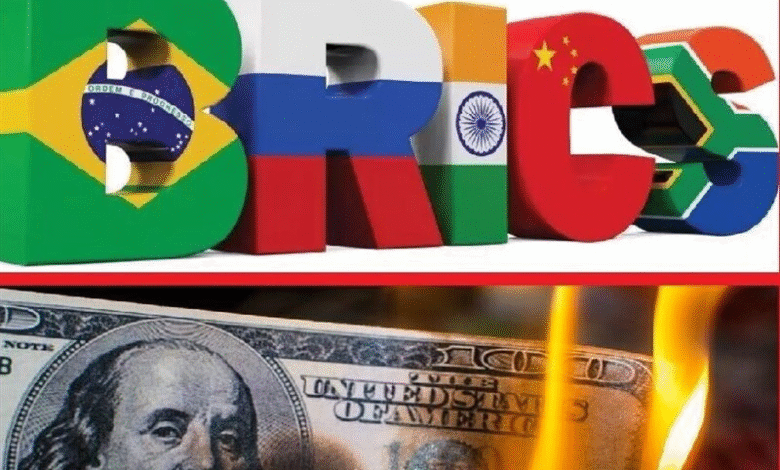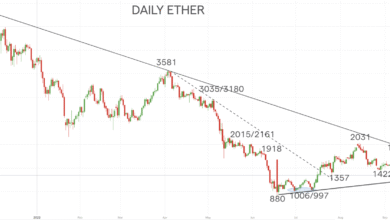BRICS Dedollarization Accelerates: Currency Shift Explained

BRICS dedollarization is reshaping the contours of the global economy as member nations endeavor to reduce their reliance on the U.S. dollar. This movement towards a more independent economic framework includes discussions around a specialized BRICS currency and the establishment of robust payment systems designed to facilitate trade among member states. Russian Foreign Minister Sergey Lavrov recently emphasized the growing trend of using national currencies within the BRICS bloc, a shift that reflects broader dedollarization news impacting international financial systems. As countries like Russia capitalize on this transition, it strengthens their economies and fosters a more self-sufficient economic environment. This evolving landscape marks a pivotal moment for the BRICS nations as they seek to lessen Western influence and navigate their own economic futures.
The ongoing shift in international economic dynamics can be described as the diminishing dominance of the U.S. dollar within the BRICS nations. As these countries reconsider their financial strategies, they are exploring the creation of a common currency while enhancing trade through a unique BRICS payment system. This development signals a significant transformation in global trade practices, reflecting a collective resolve among BRICS members to establish a more balanced financial architecture. Amidst rising tensions with Western economies, this approach is not merely about currency but rather about redefining international financial systems to better represent the interests of emerging economies. Ultimately, the movement towards dedollarization heralds a new era for nations seeking to assert greater control over their economic destinies.
The Rise of BRICS and Dedollarization
The BRICS nations—Brazil, Russia, India, China, and South Africa—are leading the charge in the global move towards dedollarization. This transformation is driven by a growing reluctance to rely on the U.S. dollar for international transactions, which many member states perceive as a tool of political influence by the West. This shift is not merely a reaction to current geopolitical pressures but also a strategic decision to establish economic autonomy and resilience within the international financial systems.
As Russian Foreign Minister Sergey Lavrov pointed out, the integration of national currencies in trade between these countries represents a significant departure from traditional dollar-centric transactions. By utilizing their respective currencies, BRICS countries aim to mitigate risks associated with U.S.-imposed sanctions, thereby reinforcing their economic sovereignty. This new economic dynamic expresses a broader narrative of countries in the Global South actively seeking to redefine their financial interactions to promote stability and independence from Western dominance.
Frequently Asked Questions
What is BRICS dedollarization and why is it important?
BRICS dedollarization refers to the efforts made by BRICS countries—Brazil, Russia, India, China, and South Africa—to reduce reliance on the U.S. dollar in international trade and finance. This shift is crucial as it aims to construct a resilient payment system and establish an independent economic landscape, minimizing the influence of Western financial sanctions and enhancing economic autonomy among BRICS nations.
How is the BRICS currency impacting global economics?
The introduction of a BRICS currency could significantly alter global economics by facilitating trade among member nations without the U.S. dollar. This move towards a BRICS currency represents a broader trend of dedollarization, where countries seek alternatives to the dollar, aiming for a more balanced international financial system.
What recent dedollarization news has emerged from BRICS nations?
Recent dedollarization news from BRICS nations highlights a rapid increase in using local currencies for trade. For instance, Russian Foreign Minister Sergey Lavrov reported that 90% of Russia’s transactions within BRICS were conducted in the rouble and other local currencies, signaling a substantial shift away from Western financial systems.
How does the BRICS payment system work?
The BRICS payment system is designed to facilitate trade and financial transactions among member countries without relying on the U.S. dollar. By developing a cross-border payment infrastructure, BRICS aims to enhance the use of national currencies, ensuring smoother and more secure trade practices, ultimately contributing to the dedollarization initiative.
What role does Russia’s economy play in the BRICS dedollarization efforts?
Russia’s economy plays a pivotal role in the BRICS dedollarization efforts as it actively promotes the use of the rouble in international transactions with other BRICS nations. With significant trade conducted in local currencies, Russia’s strategy is instrumental in reducing dependence on the U.S. dollar and fostering economic independence among BRICS countries.
Are there plans for a single BRICS currency in the future?
While the idea of a single BRICS currency has been discussed, officials like Sergey Lavrov have stated that it is premature to consider such a transition. The current focus is on creating the necessary economic and financial conditions to support a common currency, indicating a cautious approach towards a monetary union within BRICS.
What challenges does BRICS face in its dedollarization process?
BRICS faces several challenges in its dedollarization process, including the need for robust payment systems, the establishment of trust among member nations, and overcoming the entrenched dominance of the U.S. dollar in global trade. Additionally, the varied economic conditions and policies of individual BRICS countries may complicate the transition towards a more unified economic strategy.
| Key Points |
|---|
| BRICS Transitioning from the US Dollar |
| Use of National Currencies Over Western Currencies |
| Creation of Settlement Systems to Avoid Disruption |
| Shift Noted in Russia’s Transactions with BRICS Countries |
| Concerns Over Political Blockages in Payment Transactions |
| Emerging Trends in Global Economics Pushing Dedollarization |
| Need for Favorable Conditions for Common Currency Discussion |
| Focus on Investment Platforms Instead of a Monetary Union |
Summary
BRICS dedollarization is a critical movement that signifies a concerted effort by member nations to replace the U.S. dollar with national currencies and autarkic systems. As highlighted by Russian Foreign Minister Sergey Lavrov, the shift reflects not only economic imperatives but also a resistance against Western financial hegemony. With ongoing developments in payment systems and increasing economic collaboration among BRICS nations, the bloc is positioning itself to create a new global economic order that minimizes dependency on traditional Western currency structures.




